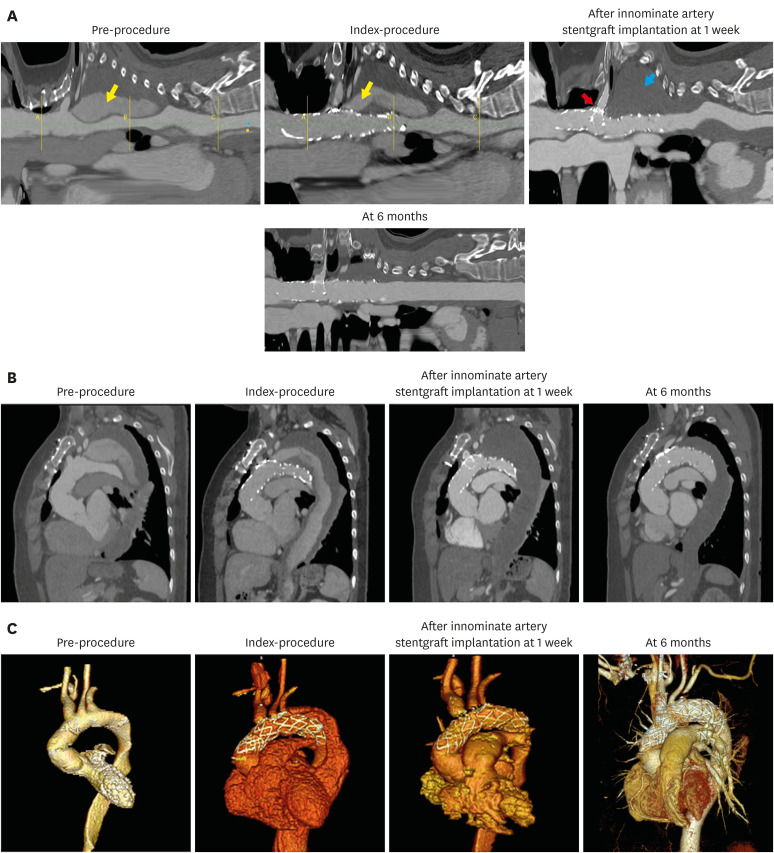Korean Circ J.
2022 Aug;52(8):635-637. 10.4070/kcj.2022.0074.
Successful Management of Recurrent Type A Aortic Dissection With Customized Fenestrated Stentgraft in a Patient With High Surgical Risk
- Affiliations
-
- 1Incheon Sejong Hospital, Incheon, Korea
- 2S&G Biotech Incorporated, Seoul, Korea
- 3Cardiovascular Center, Korea University Guro Hospital, Seoul, Korea
- KMID: 2532335
- DOI: http://doi.org/10.4070/kcj.2022.0074
Figure
- Full Text Links
- Actions
-
Cited
- CITED
-
- Close
- Share
- Similar articles
-
- Acute Type II Aortic Dissection with Severe Aortic Regurgitation and Chronic Descending Aortic Dissection in Pregnant Patient with Marfan Syndrome
- Surgical Treatment of Acute Type A Aortic Dissection in Ehlers-Danlos Syndrome
- Endovascular Repair of Thoracic Aortic Aneurysm Using a Custom-made Fenestrated Stent Graft to Preserve the Left Subclavian Artery
- Placement of Endovascular Stent Graft in Acute Malperfusion Syndrome After Acute Type II Aortic Dissection
- Surgical Repair of Retrograde Type A Aortic Dissection after Thoracic Endovascular Aortic Repair




